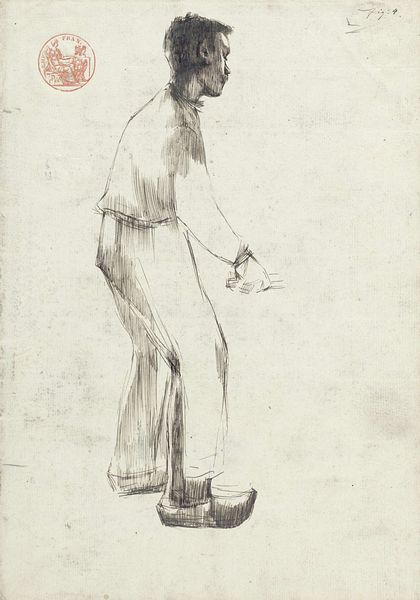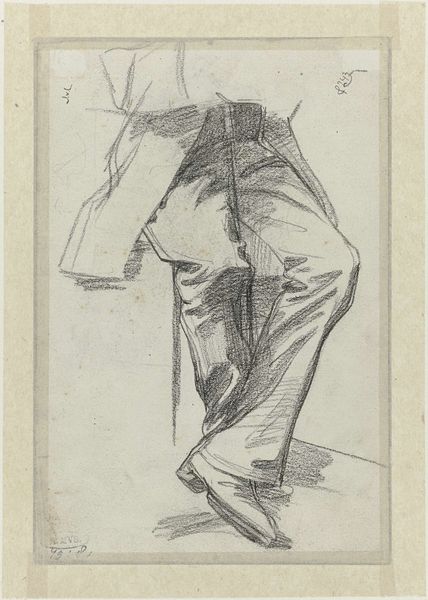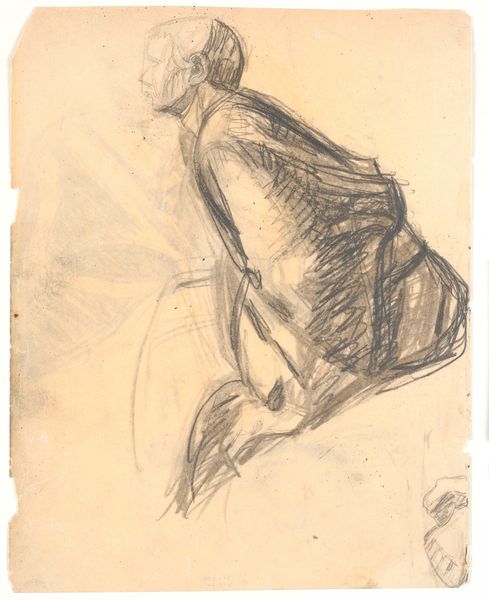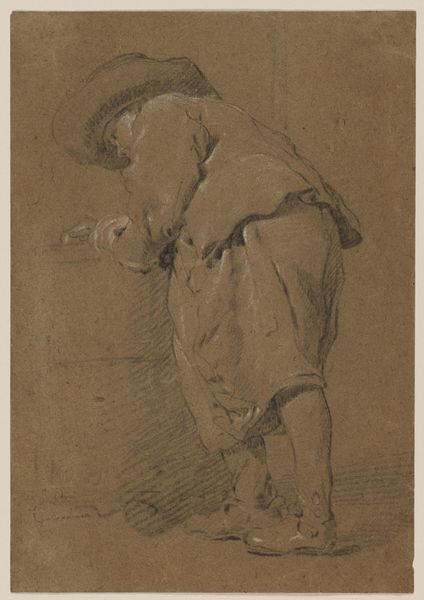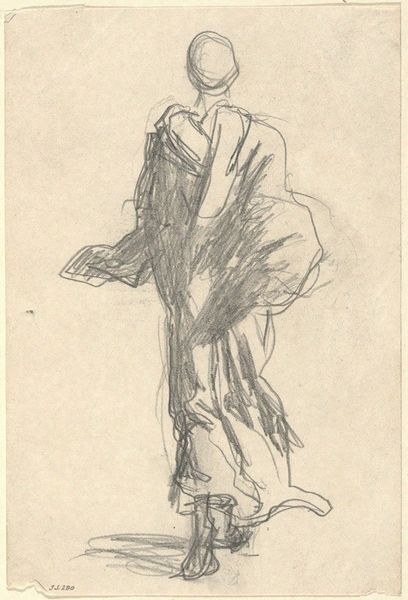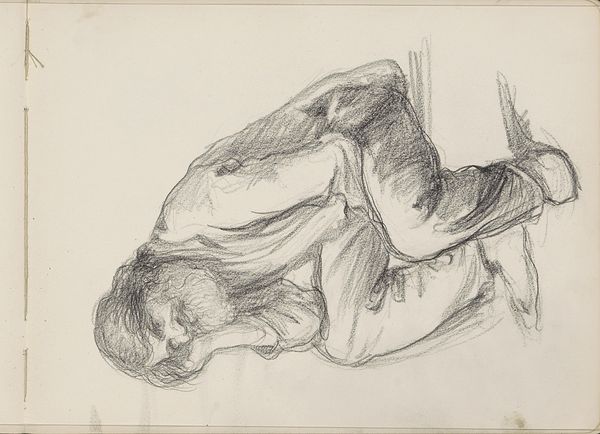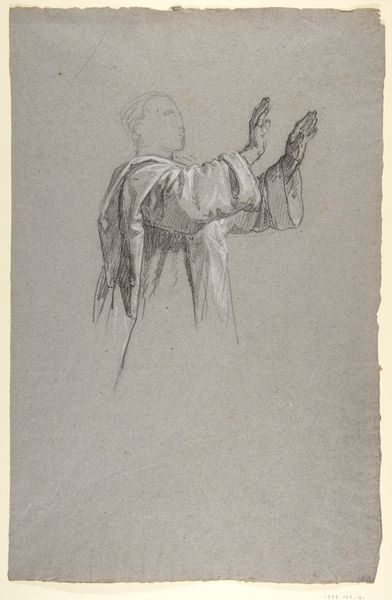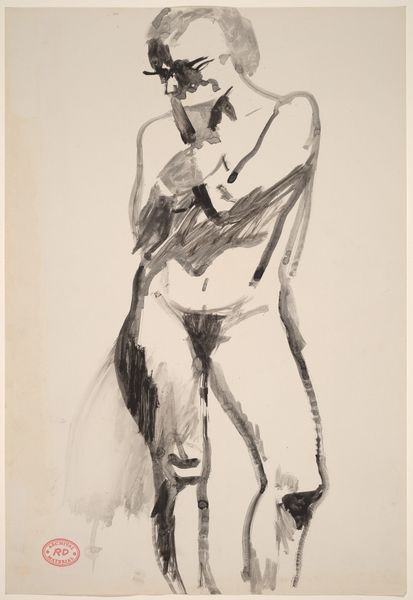
Modelstudie van staande halfnaakte man, naar omlaag ziende 1867 - 1923
0:00
0:00
Dimensions: height 338 mm, width 248 mm
Copyright: Rijks Museum: Open Domain
Curator: Here we have a drawing by George Hendrik Breitner, known as "Modelstudie van staande halfnaakte man, naar omlaag ziende," created sometime between 1867 and 1923. It's part of the Rijksmuseum's collection. My first thought: it appears like a quick, observational study rendered in pencil. Editor: It does feel very immediate, doesn’t it? There’s something vulnerable in his averted gaze, like he’s caught in a private moment. The hasty lines are evocative. What fascinates me is thinking about Breitner himself observing this man, transforming flesh and bone into strokes of graphite, line weight, how much pressure do you exert to create shading—it is fascinating. Curator: Absolutely. The drawing’s power lies in its directness. This period marks a time when artists were increasingly interested in capturing everyday life, moving away from the grand historical narratives. He uses economical pencil work. How much did this paper cost? How did he get his hand to perform in such a way. This sketch really challenges the boundary between academic practice and something more raw, immediate, and perhaps even 'real'. Editor: True, and you sense that almost unfinished quality adds to its charm. Is he sad, is he tired? I imagine the sitter's fatigue. There’s a sense of gravity pulling him downwards, reflected in his posture. You can imagine that pose holding both comfort and constraint as a performing act or a physical condition—do we praise the skill or sympathize the subject here? It raises fascinating issues around who’s doing what labor in the artist-model relationship. Curator: Indeed. By choosing a simple pencil medium, and paper, the focus is brought back to the artist’s skill in observation, labor to execute in pencil and convey mood using only tone and line. It pushes the boundaries of what was considered fine art at the time, moving towards what could even be regarded now as more commonplace art for all through accessible material and process. Editor: Yes, there's such an open invitation to think beyond the final art and into its beginning, a start into the means of art making! You look at his arm there and it begs: Where is he coming from? What is his story? I’d love to have met him. I am really fascinated by how quickly the eye constructs this complete form and emotional landscape. Curator: It shows us that an appreciation for a work is as much about the process as it is about that so called art object. We get the impression that there may have been plenty of iterations leading up to this artwork—a physical endurance. I admire the artist in this model.
Comments
No comments
Be the first to comment and join the conversation on the ultimate creative platform.
